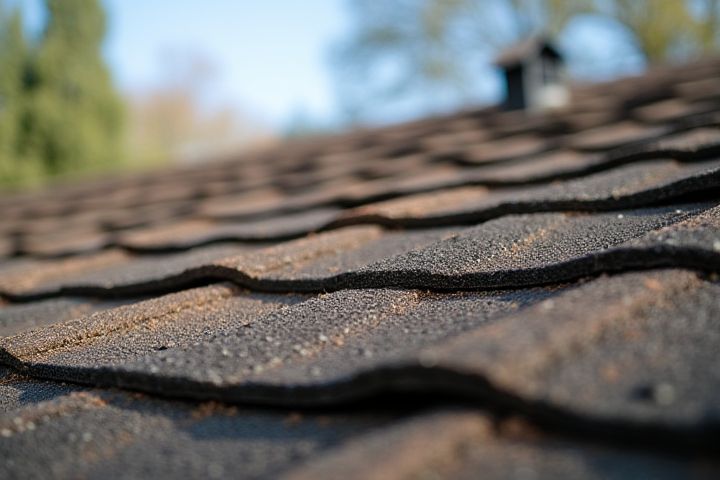
A residential roof typically requires replacement every 20 to 25 years, depending on the roofing materials used. Asphalt shingles, the most common choice, generally last between 15 to 30 years, while metal roofs can last up to 50 years with proper maintenance. Factors such as climate, weather extremes, and environmental conditions can significantly influence the lifespan of your roof. Regular inspections, ideally twice a year, can help identify damage or wear that may necessitate early replacement. Ensuring proper ventilation and insulation also plays a crucial role in extending your roof's longevity.
How Often Does A House Need A New Roof
Roofing Material Lifespan
The lifespan of roofing materials varies significantly, influencing how often your house may need a new roof. Asphalt shingles typically last between 15 to 30 years, while metal roofs can endure 40 to 70 years, depending on the quality of materials used. Slate and tile roofs offer a longevity of 50 years or more, making them a durable option for homeowners. Regular inspections and maintenance can extend the life of your roof, helping you avoid premature replacements and costly repairs.
Climate Impact
A house typically needs a new roof every 20 to 30 years, depending on the roofing materials and local climate conditions. In areas with extreme weather, such as heavy rainfall, snow, or intense UV exposure, roofs may require replacement as frequently as every 15 years. Climate impacts, including increased temperature fluctuations and severe storms, can accelerate wear and tear, leading to more frequent maintenance and replacement needs. Regular inspections, every 1-3 years, can help identify signs of damage and prolong the life of your roof.
Visible Damage
Visible damage on a roof, such as missing shingles, cracked tiles, or extensive granule loss, often indicates the need for a replacement. If you notice more than 25% of your roof's surface showing signs of deterioration, it may be time to consider a new roof, as this often leads to leaks and structural issues. While the average lifespan of asphalt shingles is about 20 to 30 years, factors like weather conditions and maintenance can expedite wear. Regular inspections every 1-2 years can help you identify visible damage early, allowing you to plan ahead and potentially save on costly repairs.
Wear and Tear
A typical roof lasts between 20 to 30 years, depending on the material and environmental conditions. Factors like severe weather, age, and lack of maintenance contribute to wear and tear, potentially requiring a new roof sooner than expected. Asphalt shingles, the most common roofing material, may need replacement after 20 years, while metal roofs can last up to 50 years with proper care. Regular inspections, ideally every 1 to 2 years, can help you identify early signs of deterioration and extend the life of your roof.
Historical Roofing Repairs
On average, a house requires a new roof every 20 to 30 years, depending on the roofing material used. Historic homes often feature materials like slate, tile, or wood shakes that may last longer but require more frequent inspections and maintenance. Historical roofing repairs can be necessary as early as 15 years for materials such as asphalt shingles, which are less durable. You should consider local climate conditions and historical preservation guidelines when assessing your roof's lifespan and repair needs, as these factors can significantly influence the longevity of your roofing system.
Quality of Installation
A high-quality roof installation can extend the lifespan of your roof to 20-50 years, depending on the materials used. For instance, asphalt shingles typically last about 20-30 years, while metal roofs can endure up to 50 years or more. To ensure longevity, look for skilled roofing contractors who adhere to manufacturer guidelines and local building codes during installation. Regular inspections every 1-2 years can also help identify potential issues before they lead to major repairs, maximizing your investment in a new roof.
Roofing Maintenance
A house typically requires a new roof every 20 to 25 years, depending on the roofing material used; asphalt shingles last about 20 years, while metal roofing can last up to 50 years. Regular roofing maintenance, such as inspections every six months and after severe weather events, can extend the lifespan of your roof. Common signs of wear include missing shingles, leaks, and granule loss in gutters, which should prompt immediate attention. Investing in routine maintenance not only helps prevent costly repairs but also enhances your home's overall value.
Local Building Codes
A house typically requires a new roof every 20 to 30 years, depending on the roofing materials used and local building codes. For instance, asphalt shingles generally last around 20 years, while metal roofs can extend 40 to 70 years, depending on their quality and environmental factors. Local building codes may dictate the exact lifespan and replacement requirements based on climate, weather conditions, and structural integrity standards specific to your area. It's crucial to consult with local regulations and obtain necessary permits to ensure compliance during a roofing replacement.
Insurance Requirements
Most insurance companies recommend replacing a roof every 20 to 30 years, depending on materials and local climate conditions. Your homeowner's insurance policy may require a new roof if the existing one shows significant wear, such as missing shingles or leaks, to maintain coverage. In some areas, insurers might offer discounts for roofs made from impact-resistant materials that have longer lifespans. Regular inspections every few years can help identify issues early and ensure compliance with your insurer's requirements.
Warranty Duration
A typical asphalt shingle roof's warranty duration ranges from 20 to 30 years, while high-end materials like metal can offer warranties exceeding 50 years. However, environmental factors such as extreme weather conditions can affect the longevity of your roof, requiring replacement sooner than expected. Regular inspections and maintenance are crucial and should occur every three to five years to ensure your roof meets its warranty conditions. If you notice significant wear or damage after 15 years, it's wise to consider addressing these issues before they compromise your home's integrity.
